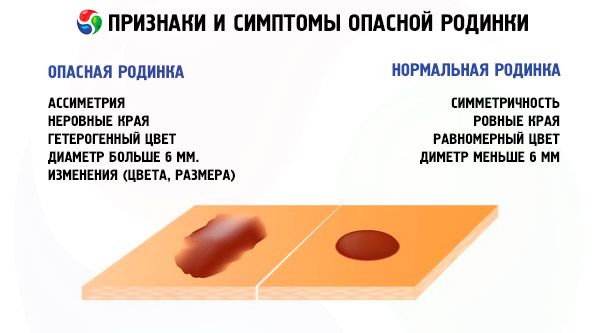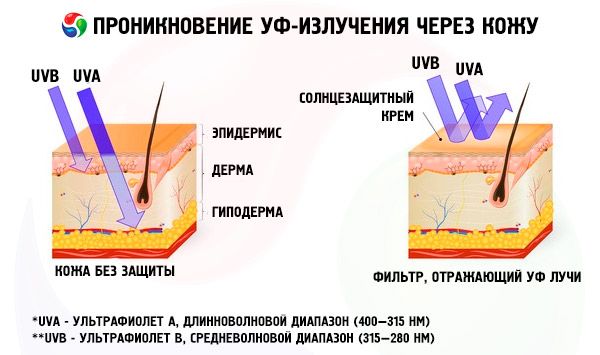Medical expert of the article
New publications
Why does a mole itch and what to do?
Last reviewed: 12.07.2025

All iLive content is medically reviewed or fact checked to ensure as much factual accuracy as possible.
We have strict sourcing guidelines and only link to reputable media sites, academic research institutions and, whenever possible, medically peer reviewed studies. Note that the numbers in parentheses ([1], [2], etc.) are clickable links to these studies.
If you feel that any of our content is inaccurate, out-of-date, or otherwise questionable, please select it and press Ctrl + Enter.
We all have moles, and we are so used to them that we do not even notice them on the body, and we do not pay special attention to their number, unless there is a special reason for this. Moles are formations darker than the skin color, which are formed due to improper synthesis of the pigment melanin. Most of these formations are not dangerous until they begin to change color, size, structure.
Causes itching in the mole area
Brown spots on the body are cells with an increased content of melanin, a pigment that colors the skin darker than its natural color. In a normal situation, birthmarks should not cause any discomfort to a person, but if there is discomfort, including itching in the mole, this should be paid attention to, as this may be a sign of malignancy.
If you have itching in the area of the mole, pay attention to your clothes, or rather to their comfort. Excessively tight or uncomfortable clothes can provoke itching in the area of the nevus, since friction of tissues can irritate the birthmark. Solving this problem is quite simple - you need to wear more spacious clothes that fit your figure. Also, a mole can itch from irritation later.
The second reason: if a mole itches, turns red, swells, shows signs of inflammation, peeling, and can even increase in size, this means that the cells have begun to divide too quickly. This is dangerous and can lead to a rapid increase in the nevus, and therefore to the formation of melanoma (skin cancer).
The third reason is hormonal changes in the body, which can be caused by pregnancy, taking medications, or during menopause in women.
Also, one of the reasons for the appearance of age spots is excessive ultraviolet radiation, because long-term exposure to the sun is fraught with severe skin burns and increases the risk of cancer.
Symptoms itching in the mole area
To determine the full importance of the situation and seek help from a doctor in time, you should pay attention to the following symptoms:
- The mole changes its shape and structure.
- It may itch and even flake.
- Causes pain and burning.
- The color changes, may become uneven, darker or lighter.
- Cracks or other unusual formations appear on the surface.
- Fluid or blood is released.
- The hairs growing on the surface of the spot fall out.

Also, if new moles appear on the body (back, neck or legs) and itch, you should consult a dermatologist.
Where does it hurt?
Complications and consequences
If a mole itches, but you still do not consider it necessary to see a doctor and undergo a detailed examination and determine the causes, it is possible that the birthmark may change and degenerate into a malignant neoplasm. Treatment of this pathology will be more problematic.
After the removal of a mole, complications are possible: the wound may bleed, red spots and itching may appear around the scar, the temperature may rise, pus or other discharge may be released. If such symptoms occur, you should contact a clinic for examination and elimination of the cause.
 [ 1 ]
[ 1 ]
Diagnostics itching in the mole area
You need to monitor all changes that may occur with your neoplasms and, if any changes occur, consult a dermatologist if:
- the mole increases in size and itches,
- the area around the mole itches,
- the nevus is red and itchy,
- The mole became inflamed, swollen and itchy.
- the birthmark is flaky but not itchy
- An injured mole itches and may even bleed.
What to do if a mole itches?
If the above symptoms are present, it is strictly forbidden to touch or scratch the mole with foreign objects (knife, scissors, scratch with a fingernail or pick with a toothpick), even if it is in hard-to-reach places (a mole on the back, a mole on the neck). If the mole is damaged or bleeding, the affected area must be treated with hydrogen peroxide and a doctor must be consulted. It is not recommended to delay a bleeding nevus for a long time, as this entails irreversible changes.
The first signs that your mole is degenerating may be an increase in the size of the spot, itching, darkening, redness, bleeding, swelling.
If the mole itself or the area around it begins to peel, this is the first sign that you should consult an oncologist. He will conduct all the necessary examinations and give a conclusion on whether this is a symptom of an oncological disease.
Which doctor should you go to if your mole itches? First of all, of course, to a dermatologist who will conduct an examination, diagnosis, refer you for tests, and then coordinate further actions.
If a mole itches after removal, you should not worry too much, as it may be healing. If this itching causes you discomfort and is hard to bear, you can gently press the removed mole with your fingertip. This method may help for a while. If the removed mole itches for a long time and it bothers you, consult a dermatologist.
After examination by a dermatologist and depending on the test results, the doctor may refer the patient for a dermoscopy. This is a study that is performed using a dermatoscope - a device that is equipped with a magnifying lens, which allows you to examine the mole more carefully. A dermatoscope can also be used to take a digital picture of the neoplasm.
This device helps a specialist doctor to make sure that a mole is benign and to diagnose melanoma at an early stage. If cancer is suspected, a dermatologist may also send you for additional examination - a biopsy. This procedure is performed under local anesthesia. Types of biopsy:
- razor - used to examine moles with a low risk of developing melanoma. For a more serious suspicion of cancer, the thickness of the cell section may not be sufficient.
- puncture - a study in which three layers of skin are cut off, which makes it possible to obtain more informative material.
- excisional and incisional – complete or partial removal of a tumor that may have grown into the layers of the skin.
 [ 2 ]
[ 2 ]
How to examine?
Differential diagnosis
Diagnosis of itching in a mole involves careful examination of the skin formation detected by the patient, which will subsequently make it possible to avoid more serious complications ( skin cancer ). The examination is carried out by a physical method with sufficient lighting using a magnifying glass; the lymph nodes are also examined by palpation.
You should also pay attention to the asymmetry of the increase, change in color, density of the mole, the appearance of redness, itching, burning or other uncharacteristic sensations in the area of the mole.
Who to contact?
Treatment itching in the mole area
Traditional medicine claims that there are remedies that help get rid of itching in a mole. In some cases, they can even lead to the disappearance of the nevus. For example:
- Lemon and garlic mixture – alternately soak a cotton swab or disk in garlic or lemon juice and lubricate the mole. It is recommended to repeat the procedure about 6 times a day and the itching should go away.
- Herbal treatment – celandine juice: lubricate problem areas of the skin with the liquid that the plant secretes. This method of treatment can even get rid of moles altogether. This has not been scientifically proven.
- Acetic acid solution (9% vinegar) – you need to drip the solution onto the itchy mole for 6-7 days, but not more than a drop.
You can follow traditional medicine and use the suggested methods, but you still need to see a specialist for an examination.
Surgical treatment
Surgical treatment of moles is the most common and frequently used method nowadays. In this case, local anesthesia and excision of the nevus are performed. After removal, cosmetic sutures are applied, which are usually removed after 6-7 days. The average duration of excision of a mole with a scalpel is about an hour.
The downside of surgical treatment is that a light scar forms at the site of removal. This method is good because it can remove any unwanted formation, regardless of its size and depth of penetration.
If a scar itches after a mole has been removed, it means that the wound is healing and you should never scratch or pick at the area.
Removing harmless moles that do not cause any discomfort does not make any sense, since the occurrence of melanoma in their place is very rare. Excising a mole that can change its appearance is carried out only at the insistence of an experienced dermatologist or oncologist.
Prevention
To avoid irreversible changes to moles, you should follow some rules:
- Do not wear tight clothing (especially dangerous and requiring attention are moles in the waist, shoulders (straps), soles, inner thighs);
- Monitor the dynamics of moles (large birthmarks have a high probability of degenerating into malignant formations);
- After swimming in rivers, lakes, seas and other bodies of water, it is necessary to dry yourself thoroughly, because drops in the sun turn into lenses and stimulate a greater influx of solar radiation;
- Sunbathing before 10 am and after 3 pm;
- Pregnant women are strictly prohibited from sunbathing, since during this period the body undergoes hormonal changes and excessive exposure to the sun can provoke degeneration or the appearance of new moles;
- When tanning in a solarium, cover all moles on the body with special stickers;
- Avoid trauma to moles (do not scratch, pick, or touch them with foreign objects).
- People who have a lot of moles should definitely undergo regular preventive examinations.

Forecast
It is quite difficult to say whether everything will be good or completely bad. Everything depends on the person's awareness and external factors. It is necessary to monitor your health in order to eliminate the causes of possible complications in time. If you do not injure the mole and carefully monitor the existing ones, sad consequences can be avoided in time.

